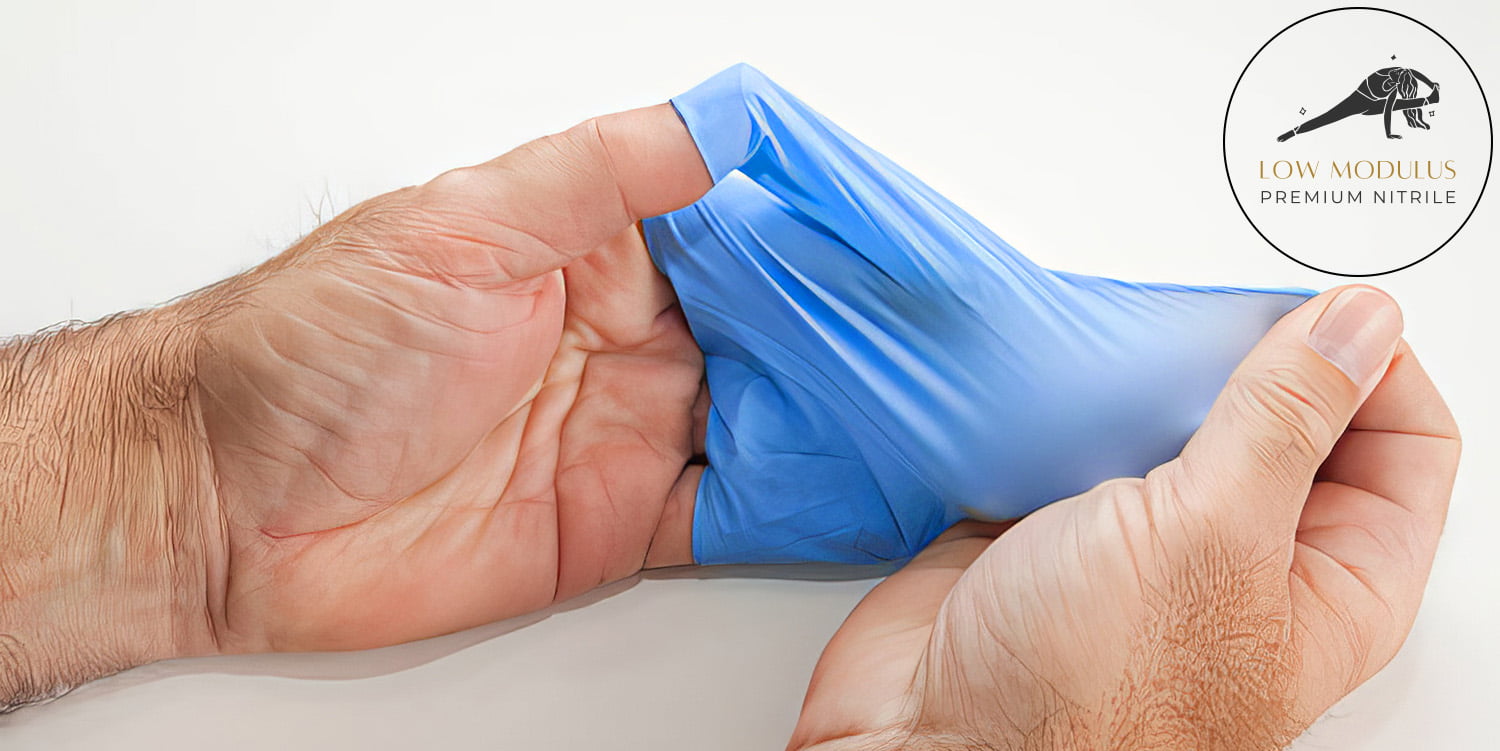
The more you know about nitrile gloves, the better equipped you’ll be to decide which pair best suits your specific needs. With so many variations of nitrile gloves on the market today, how do you know which type is right for you? To help address this question, we will in this article reveal one of the biggest secrets to a great glove, Low Modulus.
What does Low Modulus mean?
Modulus refers to the stiffness of a material. Talking about low-modulus in nitrile gloves refers to a softer and less stiff glove than other options on the market. Have you ever thought why some nitrile gloves felt stiffer than others? This is simply because of their modulus. A stiffer glove will have a higher modulus of elasticity (MOE) than a flexible glove. A low-modulus glove and a regular nitrile glove might have strength and break when the same force is applied, but the low-modulus gloves will stretch more when the same force is applied. This makes low-modulus gloves ideal for applications that require a bit of dexterity and a lot of comfort!
Why are Low Modulus gloves more comfortable?
There are several reasons why low-modulus nitrile gloves are more comfortable than other types of gloves. The reduced stiffness of the glove results in less pressure on the wearer’s hands, reducing discomfort and fatigue. Moreover, because these gloves are more flexible and soft, they’re also easier to put on and take off. And while all nitrile gloves are easy to put on, they can be hard to get off, which can cause discomfort in the wearer’s hands. Finally, since low-modulus gloves are made of the finest raw materials and on the newest machinery, they also tend to be better dermatologic-wise and less likely to cause irritation.
You can easily grip objects while wearing them.
Another reason low-modulus nitrile gloves are a better choice for professionals in the food and healthcare industries is that they allow you to grip objects easily and naturally. This is mainly because these gloves have a lower coefficient of friction than gloves made with other materials. In other words, the reduced friction between the glove and the object you’re gripping makes it easier to hold on and less likely to slip off.
There’s less risk of allergic reactions or irritation.
A key feature is that they are less likely to cause you allergic reactions. While it’s true that all types of gloves can cause allergic reactions, regular nitrile gloves are more likely to do so than low-modulus nitrile gloves. This is primarily due to the materials and chemicals used to make the gloves but also influenced by how the gloves are manufactured and processed. To help prevent allergic reactions, low-modulus gloves are cleaned and processed using fewer chemicals. Some low-modulus gloves like PROSENSO™ BIODEGRADABLE are even manufactured without any chemical accelerators, making them ideal for people with Type IV Hypersensitivity.
Conclusion
When selecting the ideal glove for your particular needs, there are several factors to consider, including the type of material, thickness, level of protection offered, and level of comfort. With this in mind, low-modulus nitrile gloves are the best choice for professionals in the food and healthcare industries. They offer the same level of protection as standard nitrile gloves while being more comfortable and less stiff than regular nitrile gloves. For your ease, we have added a Low Modulus sticker on all conforming PROSENSO™ gloves!
